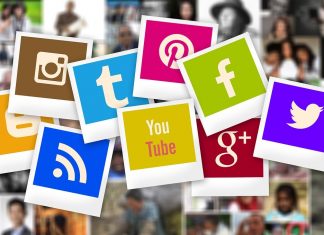It's easy to scroll through Twitter or Weibo and think most of what you see is trivial: memes, celebrity updates, or viral videos. But for governments, these platforms are often windows into the real-time pulse of society. Information travels fast online, and sometimes, that speed can signal threats, unrest, or public concerns before traditional reporting even catches on.
This is where twitter monitoring for government comes into play. Analysts aren't reading every single tweet for fun—they are looking for patterns, early warning signs, and insights into public sentiment. At the same time, tools like weibo reverse image search for government are helping officials verify images, track the origin of viral content, and detect potential misinformation before it spreads widely.
Twitter: The Digital Pulse
Twitter has long been the platform where news breaks first. From protests to natural disasters, users post updates in real time. Governments that pay attention can gain a significant advantage in managing responses or understanding the public mood.
Take an example from recent events. During a sudden flood in a metropolitan area, citizens posted photos of submerged streets and blocked roads. Emergency services, using twitter monitoring for government, were able to prioritize resources, direct rescue teams, and communicate official instructions based on what was actually happening on the ground. In a situation like that, relying only on traditional channels would have slowed the response significantly.
But Twitter is more than just a tool for crisis response. Analysts can detect the early spread of misinformation, track potential threats, and even see how narratives are evolving in different regions. By analyzing hashtags, mentions, and retweets, it's possible to build a picture of trends before they become crises.
Weibo and the Power of Image Verification
While Twitter dominates in the West, platforms like Weibo are critical in other regions. Images posted online can tell powerful stories, but they can also mislead. That's where weibo reverse image search for government becomes indispensable.
Reverse image search allows analysts to trace an image back to its original source. Was this photo taken during a recent event, or is it an old picture being recycled to push a false narrative? By tracking the origins of images, governments can prevent panic, counter misinformation, and even detect coordinated attempts to manipulate public opinion.
Consider a case where an image depicting unrest in one city began circulating online. At first glance, it appeared to be current. Using reverse image search, analysts discovered it was several years old, originally posted in a different country. That one verification step prevented authorities from acting on false information, which could have caused unnecessary alarm.
How Monitoring Helps Governments
Beyond crisis response and verification, social media monitoring helps governments understand the broader digital landscape. Public sentiment, trends, and online behavior all provide clues about potential risks or areas requiring attention.
For example, tracking trending hashtags can reveal dissatisfaction before protests form in the streets. Monitoring images and videos helps detect emerging threats, while combining that with geolocation data can pinpoint where problems are likely to occur. In short, these tools are not about censorship—they're about being informed and responsive.
Challenges and Considerations
Of course, social media monitoring is not without challenges. The sheer volume of posts makes it easy to drown in data. Noise, spam, and irrelevant content are constant hurdles. This is why tools like Twitter analytics and Weibo image search are critical—they help filter what matters from what doesn't.
Ethics are also a concern. Monitoring must focus on publicly available content. Governments must respect privacy while balancing the need to stay informed. Transparency about how monitoring is used is essential to maintain public trust.
Another challenge is accuracy. A viral image or tweet may not always represent reality. Misinterpretation can lead to wrong decisions, which is why verification tools, including reverse image search, are crucial.
Human Judgment Remains Key
No matter how advanced monitoring tools become, human judgment is still central. Algorithms can highlight trends and flag anomalies, but it takes analysts to interpret context, understand intent, and decide the next steps.
For instance, an image flagged by reverse search might show a protest. But analysts can assess whether it's a small, localized event or part of a broader movement. Similarly, Twitter trends might look alarming at first, but with context, experts can determine whether they represent real risk or just a temporary spike in online chatter.
Looking Forward
As social media evolves, governments will continue adapting their monitoring strategies. New platforms emerge, formats change, and digital communication becomes more complex. Advanced tools for twitter monitoring for government and weibo reverse image search for government will become even more important in separating signal from noise.
The combination of real-time monitoring and verification ensures that governments stay proactive rather than reactive. It helps prevent misinformation, respond to emergencies faster, and make better-informed decisions.
Final Thoughts
Social media is messy, fast-moving, and sometimes overwhelming. But for governments that learn to read it correctly, it's also a rich source of information. By using twitter monitoring for government and tools like weibo reverse image search for government, agencies can stay ahead of events, make smarter decisions, and respond effectively to both real threats and misinformation.
In the digital age, paying attention to what's publicly shared online isn't optional—it's essential. And with the right balance of technology, human judgment, and ethical boundaries, monitoring can serve both security and the public interest.






